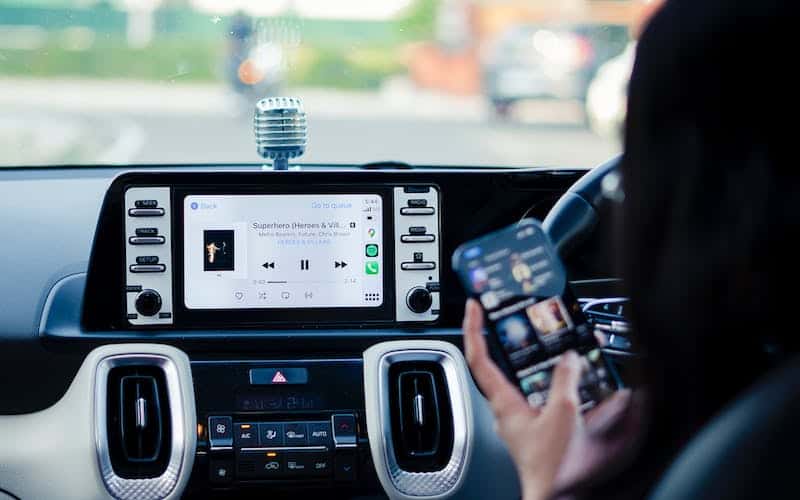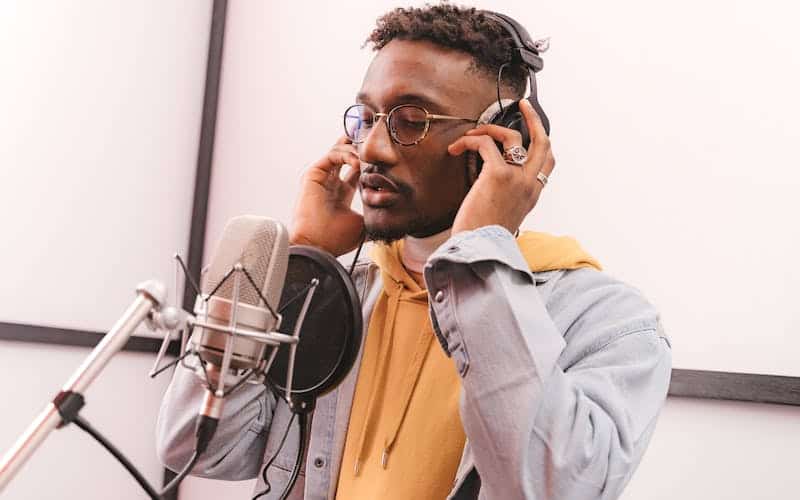How Much Does Distrokid Pay Per Stream In 2023?
With over a million artists using DistroKid to get their music on streaming platforms, a common question asked is how much DistroKid pays per stream.
In today’s crowded music landscape, streaming royalties can be a significant source of revenue for independent artists. If you want to estimate how much money you can make from DistroKid, you’ve come to the right place.
If you’re short on time, here’s the key takeaway: DistroKid does not pay artists directly. Rather, DistroKid collects royalties from streaming platforms and distributes them to rights holders after taking their commission. The amount artists make per stream depends on the streaming service, with averages ranging from $0.003 to $0.005 per stream.
How Streaming Royalties Work on DistroKid
DistroKid is a popular digital music distribution service that allows independent musicians to upload and distribute their music to various streaming platforms such as Spotify, Apple Music, and Amazon Music.
Understanding how streaming royalties work on DistroKid is crucial for artists to make informed decisions about their music distribution and potential earnings.

DistroKid Acts as an Aggregator, Not a Distributor
Unlike traditional music distributors, DistroKid acts as an aggregator, which means it does not directly distribute your music to streaming platforms.
Instead, DistroKid partners with major streaming services and acts as a middleman, delivering your music to these platforms on your behalf. This allows artists to reach a wider audience without the need to negotiate separate deals with each individual streaming service.
DistroKid aggregates the streams and sales data from these platforms and provides comprehensive analytics to artists, helping them gain insights into their audience and track their earnings. This approach simplifies the distribution process and saves artists time and effort.
Royalty Rates Vary by Streaming Service
It’s important to note that the royalty rates an artist receives per stream on DistroKid can vary depending on the streaming service. Each platform has its own unique royalty structure, which determines how much an artist is paid for each stream of their music.
For example, Spotify, being one of the largest streaming platforms in the world, has a complex formula to calculate royalties. Factors such as the country where the stream occurs, the subscriber-to-free user ratio, and the artist’s total streams all play a role in determining the royalty payout. On the other hand, Apple Music pays a fixed rate per stream, which is generally higher than Spotify’s royalty rates.
To get a better understanding of the specific royalty rates for different streaming platforms, artists can refer to the official documentation provided by DistroKid or directly visit the platforms’ websites. These resources will provide detailed information on how royalties are calculated and paid out.
It’s worth mentioning that while streaming royalties are an important source of income for artists, they can vary significantly depending on factors such as the number of streams, the artist’s popularity, and the region in which the music is streamed.
Therefore, it’s crucial for artists to actively promote their music, engage with their audience, and explore other revenue streams such as merchandise sales, live performances, and licensing opportunities to maximize their earnings.
Factors That Determine Your Streaming Royalties
When it comes to earning royalties from streaming services like DistroKid, there are several factors that come into play. Understanding these factors can help you better estimate how much you can potentially earn from your music.
Your Streaming Service Popularity
The popularity of the streaming service you choose to distribute your music on plays a significant role in determining your streaming royalties.
Streaming platforms have different user bases and, consequently, varying numbers of subscribers. Platforms with a larger user base generally offer higher royalties due to the increased number of streams.
For example, Spotify, one of the most popular streaming platforms, pays artists based on their market share of total streams. This means that the more popular your music is on Spotify, the more royalties you can expect to receive.

Premium vs. Ad-Supported Streams
Another factor that affects your streaming royalties is whether your music is being streamed on premium or ad-supported accounts.
Premium accounts, which require a subscription fee, typically generate higher royalties per stream compared to ad-supported accounts.
For instance, Spotify pays artists more for streams from premium subscribers than from free users who listen to ads. So, if a majority of your streams come from premium subscribers, you can expect a higher payout.
Country and Currency
The country in which your music is being streamed and the currency used also impact your streaming royalties.
Streaming platforms have different payout rates for different countries, taking into account factors such as local market demand and purchasing power.
For example, a stream from a country with a higher cost of living might result in a higher royalty payout compared to a country with a lower cost of living. It’s important to consider these regional differences when estimating your potential earnings.
DistroKid’s Commission
Lastly, it’s crucial to understand DistroKid’s commission structure, as it affects the amount you ultimately receive for your streams.
DistroKid charges a flat fee for distributing your music to streaming platforms, and this fee is deducted from your streaming revenue. The remaining amount is then paid out as royalties to you.
It’s worth noting that DistroKid’s commission is relatively low compared to other distributors, which means you keep a larger portion of your streaming revenue. This can be advantageous for independent artists looking to maximize their earnings.
Average Streaming Royalty Rates by Service
Spotify
When it comes to streaming royalty rates, Spotify has become one of the most popular platforms for independent artists and musicians.
As of 2023, the average payout per stream on Spotify is around $0.003 to $0.005. However, it’s important to note that these rates can vary based on several factors, including the user’s location and the type of subscription they have.
Apple Music
Apple Music is another major player in the streaming industry, known for its vast music library and user-friendly interface. In terms of royalty rates, Apple Music tends to pay slightly higher than Spotify.
On average, artists can expect to earn around $0.006 to $0.008 per stream on Apple Music.
Amazon Music
Amazon Music, with its growing user base, is also a platform worth considering for independent artists.
The royalty rates on Amazon Music are in a similar range to Spotify, with an average payout of $0.003 to $0.005 per stream. However, it’s worth noting that Amazon Music’s user base is smaller compared to Spotify and Apple Music.
YouTube
YouTube, while primarily known as a video-sharing platform, has also become a significant player in the music streaming industry. However, the royalty rates on YouTube are relatively lower compared to dedicated music streaming platforms.
On average, artists can expect to earn around $0.001 to $0.003 per stream on YouTube.

Comparisons and Averages
When comparing the average streaming royalty rates across these platforms, it’s clear that there are differences in payouts. Spotify and Apple Music tend to offer higher rates compared to Amazon Music and YouTube.
However, it’s important to consider other factors such as the platform’s user base, popularity, and the overall impact on an artist’s music career.
It’s worth mentioning that these royalty rates are subject to change and may vary based on factors such as the artist’s contract, music genre, and the region where the streams are generated. Additionally, it’s important for artists to understand that streaming royalties alone may not be the sole source of income.
Artists can also earn money through live performances, merchandise sales, and other revenue streams.
For more information on streaming royalty rates, you can visit the websites of each streaming platform mentioned above:
Tips to Maximize Your Streaming Royalties
Streaming has become a dominant force in the music industry, and artists are always looking for ways to maximize their royalties.
DistroKid is one of the popular music distribution platforms that allows independent artists to get their music on streaming platforms like Spotify, Apple Music, and more.
But how much does DistroKid actually pay per stream in 2023? While the exact payment per stream can vary, there are several tips you can follow to maximize your streaming royalties.
Release Consistently
One of the key factors in generating streaming royalties is releasing music consistently. By regularly putting out new content, you keep your audience engaged and increase your chances of getting more streams.
DistroKid offers a feature called “Leave a Legacy” that allows you to keep your music on streaming platforms even after you cancel your subscription. This means that your music will continue to earn royalties as long as it’s being streamed.

Promote Your Music
Promotion plays a crucial role in increasing your streaming royalties. Utilize social media platforms like Instagram, Facebook, and Twitter to create hype around your music releases. Engage with your fans, share behind-the-scenes content, and create a buzz that encourages people to stream your music.
Additionally, consider reaching out to music blogs and online publications for potential features and reviews. The more exposure you get, the more streams you’re likely to receive.
Target Playlists
Playlists are a powerful tool for exposure and increasing your streaming royalties. Identify playlists that align with your music genre and style, both on popular streaming platforms and independent curators’ playlists.
Contact the playlist curators or submit your music to playlist submission websites. Getting your songs on well-curated playlists can significantly boost your streams and exposure to new listeners.
Engage Your Fanbase
Building a strong connection with your fanbase is essential for long-term success in the music industry. Engage with your fans through live performances, Q&A sessions, and exclusive content.
Create a sense of community around your music and make your fans feel like they are part of something special. By nurturing this relationship, you’ll have a loyal fanbase that will stream your music consistently, leading to higher streaming royalties.
Remember, while DistroKid provides a platform for artists to distribute their music and earn royalties, the amount you earn per stream can vary based on several factors. By following these tips and actively promoting your music, you can increase your chances of maximizing your streaming royalties in 2023 and beyond.
DistroKid Alternatives for Music Distribution
CD Baby
CD Baby is one of the most well-known alternatives to DistroKid when it comes to music distribution. They have been in the industry for over two decades and have helped countless independent artists get their music out to the world.
CD Baby offers a variety of distribution plans to suit different needs and budgets. They also provide additional services such as physical CD distribution, publishing administration, and sync licensing.
With CD Baby, artists can keep 91% of their royalties, which is higher than what some other distributors offer. They also provide detailed sales and streaming reports, allowing artists to track the performance of their music.
CD Baby has a strong reputation for excellent customer service and support, making them a popular choice among musicians.
TuneCore
TuneCore is another popular alternative to DistroKid that has been around for quite some time. They offer a straightforward and user-friendly platform for artists to distribute their music to major streaming platforms and online stores. TuneCore also provides additional services like publishing administration and YouTube monetization.
One of TuneCore’s standout features is its transparent pricing structure. Artists pay a flat fee per release or per year, depending on their needs. TuneCore does not take a percentage of the artist’s royalties, allowing them to keep 100% of their earnings. This can be a great option for artists who expect to generate a high volume of streams and sales.
Amuse
Amuse is a relatively new player in the music distribution scene, but it has gained popularity for its unique approach. Unlike most distributors, Amuse offers free distribution for artists. They have a freemium model where artists can distribute their music for free and then upgrade to a premium plan for additional features and benefits.
Amuse also provides artists with detailed analytics, allowing them to track the performance of their releases. They have a user-friendly mobile app that makes it easy for artists to manage their music and access important data on the go.
Amuse’s free distribution option has made it a popular choice among emerging artists looking to get their music heard without breaking the bank.
Comparing Top Distributors
| Feature | CD Baby | TuneCore | Amuse |
|---|---|---|---|
| Percentage of royalties kept by artist | 91% | 100% | Varies based on plan |
| Publishing administration | Yes | Yes | Yes |
| Additional services | Physical CD distribution, sync licensing | Publishing administration, YouTube monetization | Premium plans with added features |
| Customer support | Excellent | Good | Good |
When comparing these top distributors, it’s important for artists to consider their specific needs and goals. CD Baby may be a good choice for those who value physical distribution and sync licensing opportunities.
TuneCore’s flat fee structure can be beneficial for high-volume artists, while Amuse’s free distribution option is attractive for emerging artists on a tight budget.
Ultimately, the choice of music distributor depends on the individual artist’s preferences and priorities. It’s always a good idea to research and compare different options to find the best fit for one’s unique music career.
Conclusion
While streaming royalties are complex and variable, using a distributor like DistroKid can help artists access lucrative royalty revenue. With the right release strategy and promotional efforts, independent artists can build a sustainable streaming income over time.
The most important factors are creating great music that connects with fans and distributing it widely across top streaming platforms.
By better understanding how streaming royalties work, musicians can maximize their earning potential with each release. While each stream may not pay out much individually, they can add up with a strong catalog and fanbase.
DistroKid provides the tools artists need, but your career success ultimately depends on the music itself.







